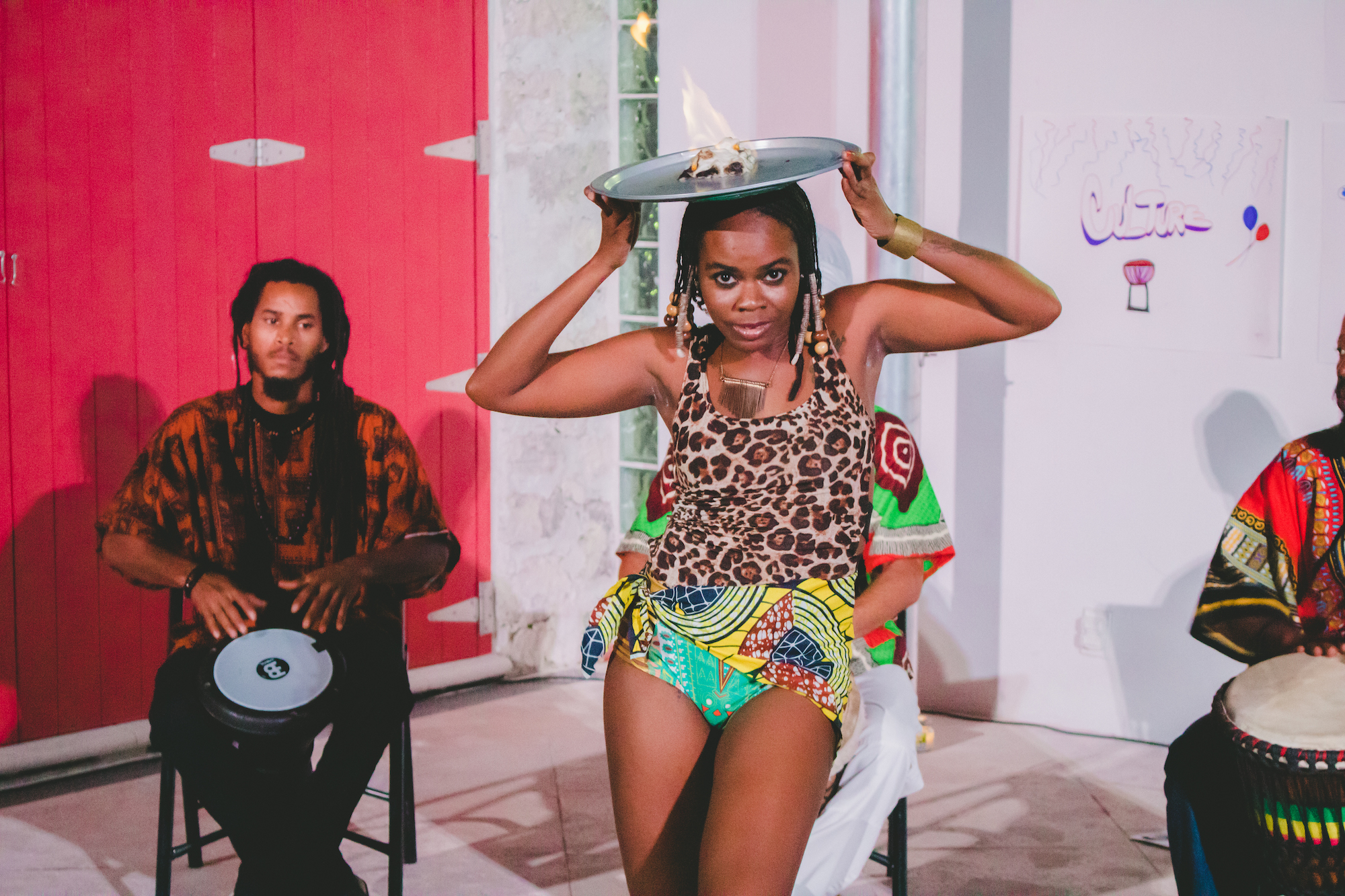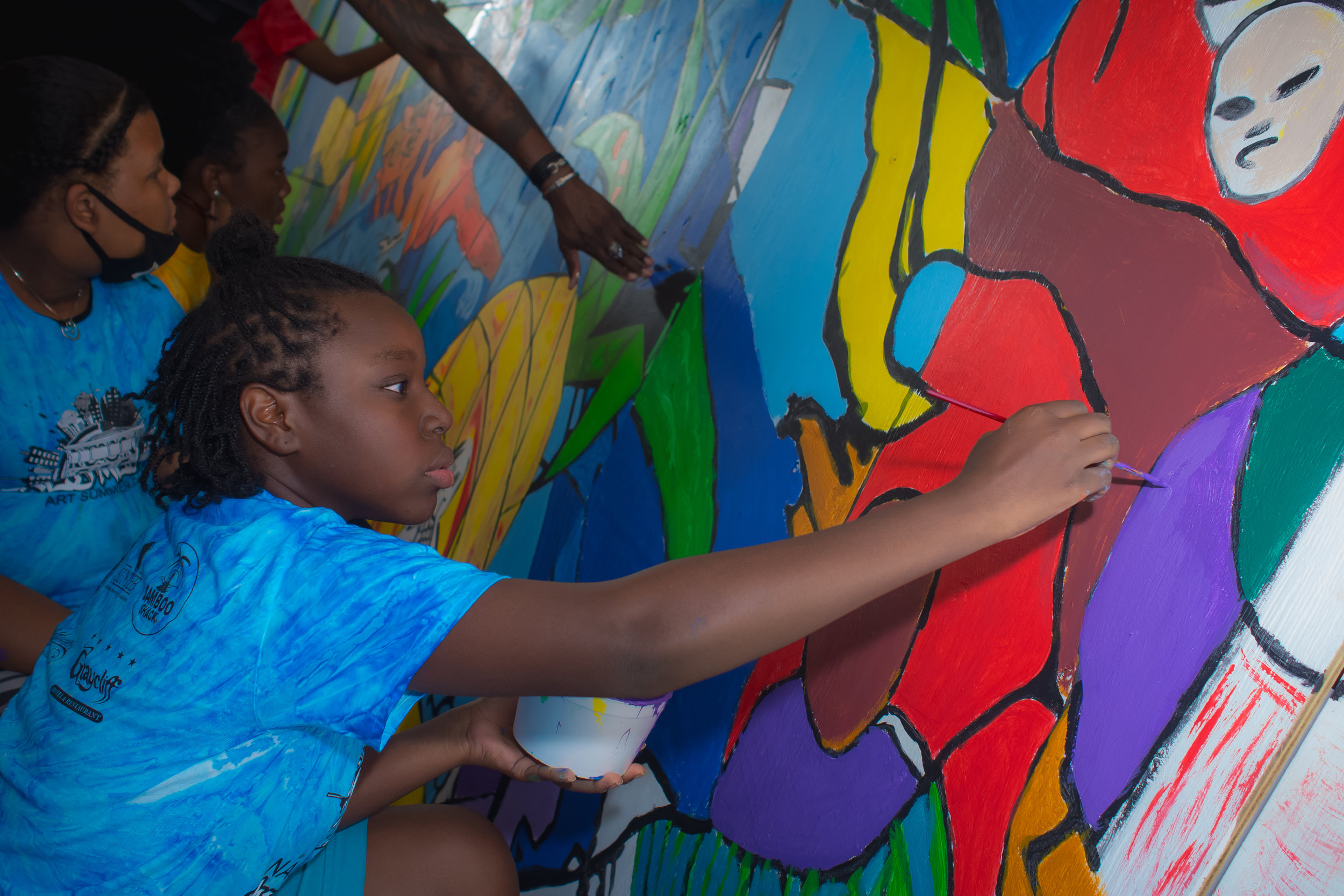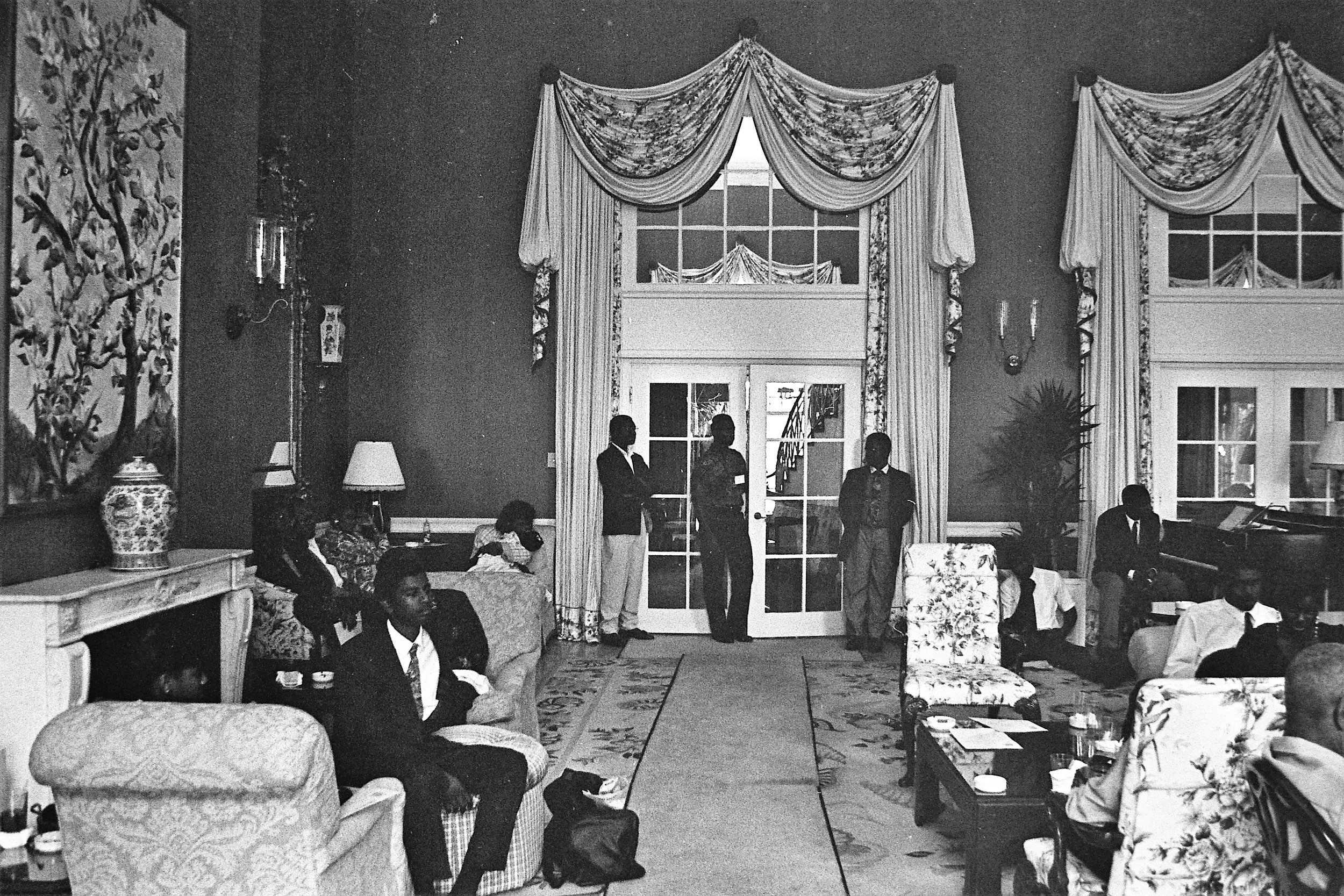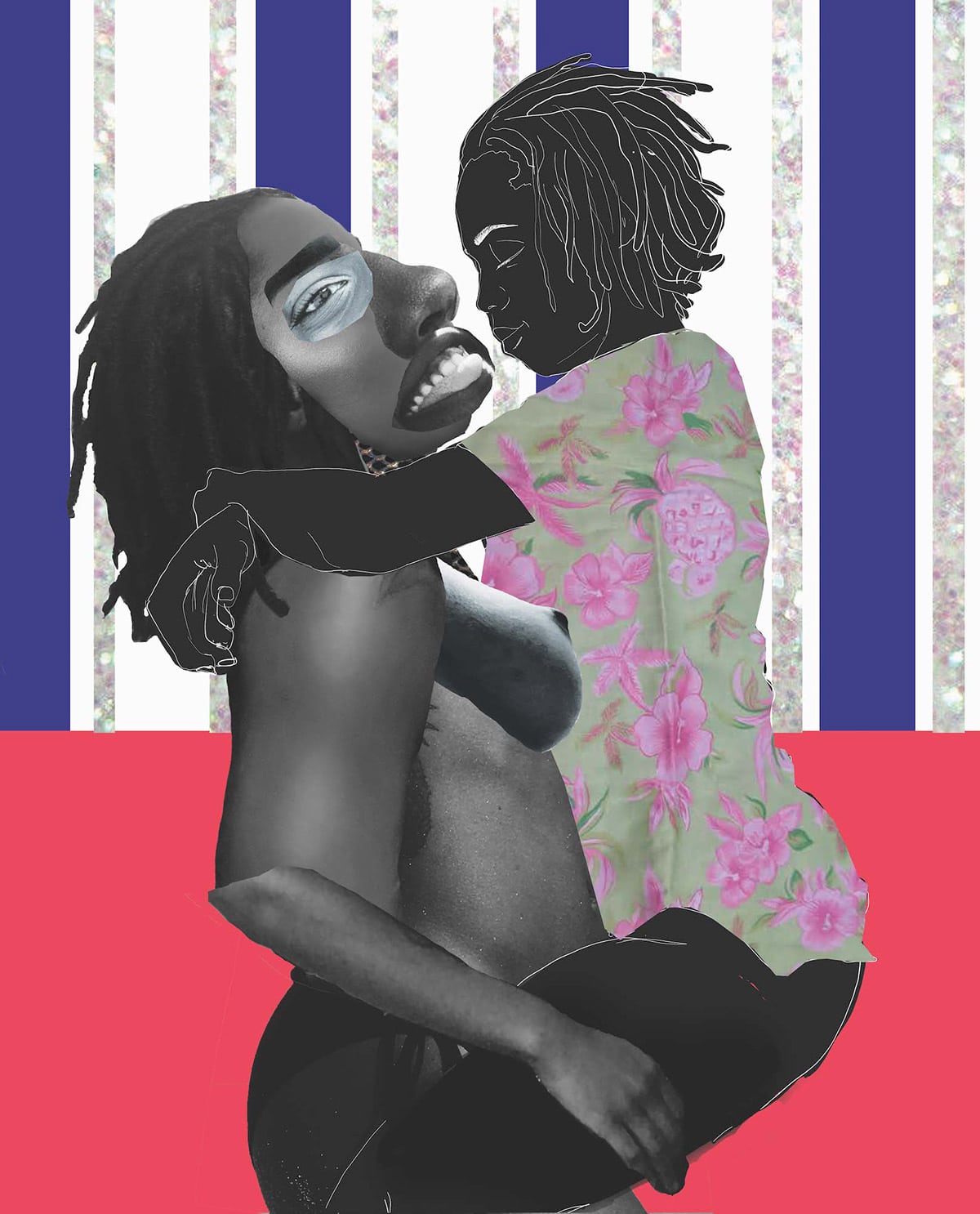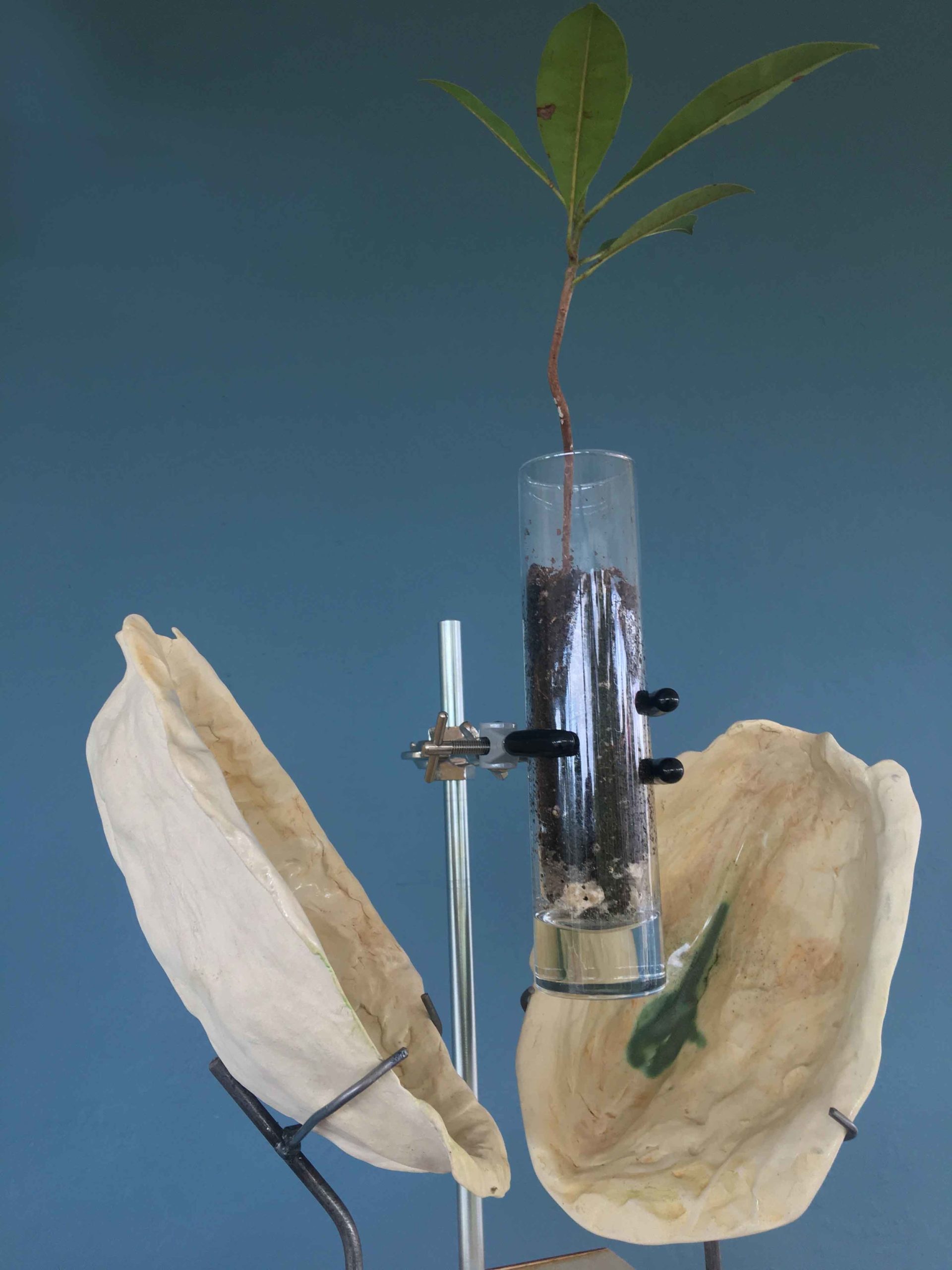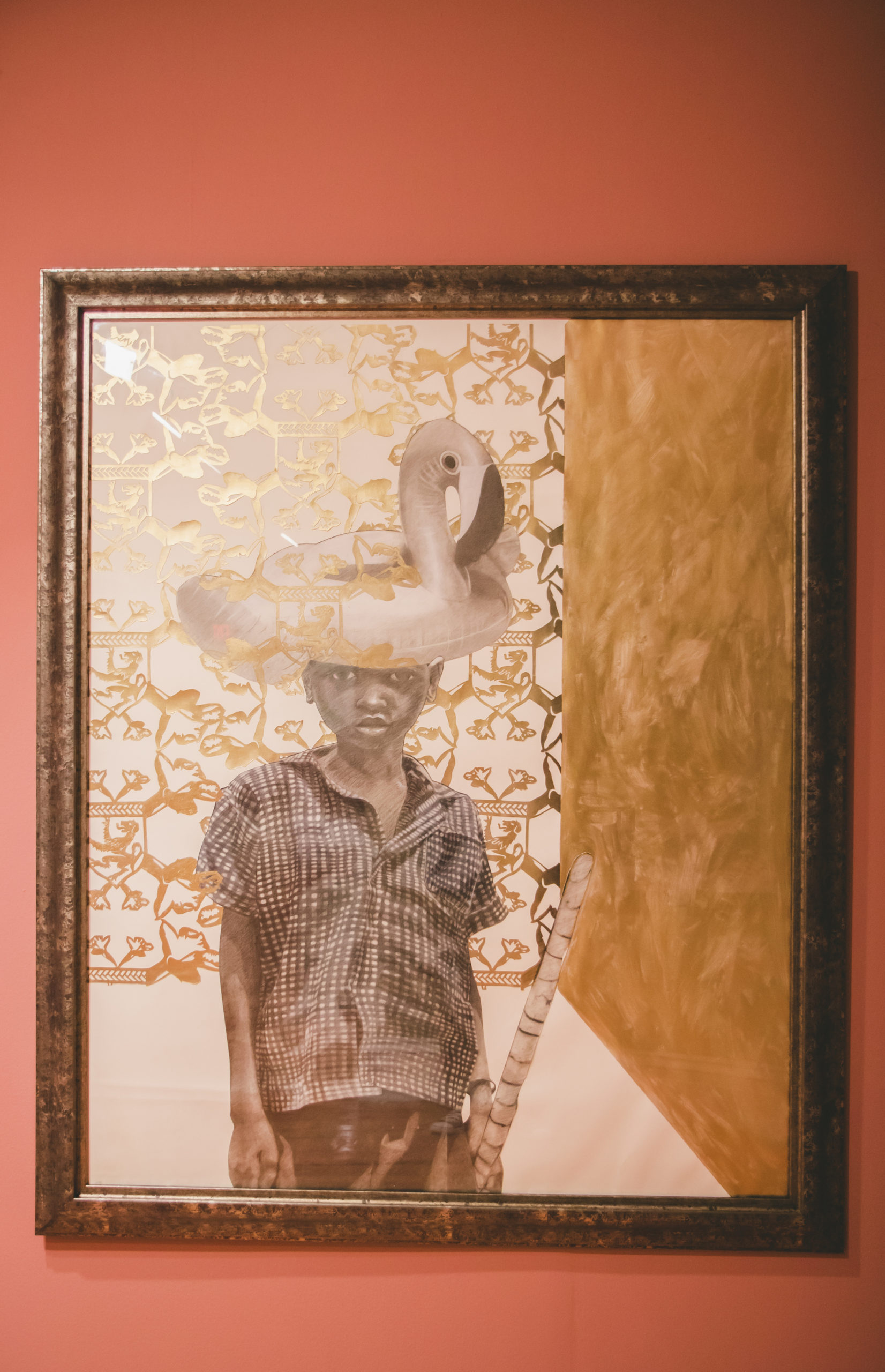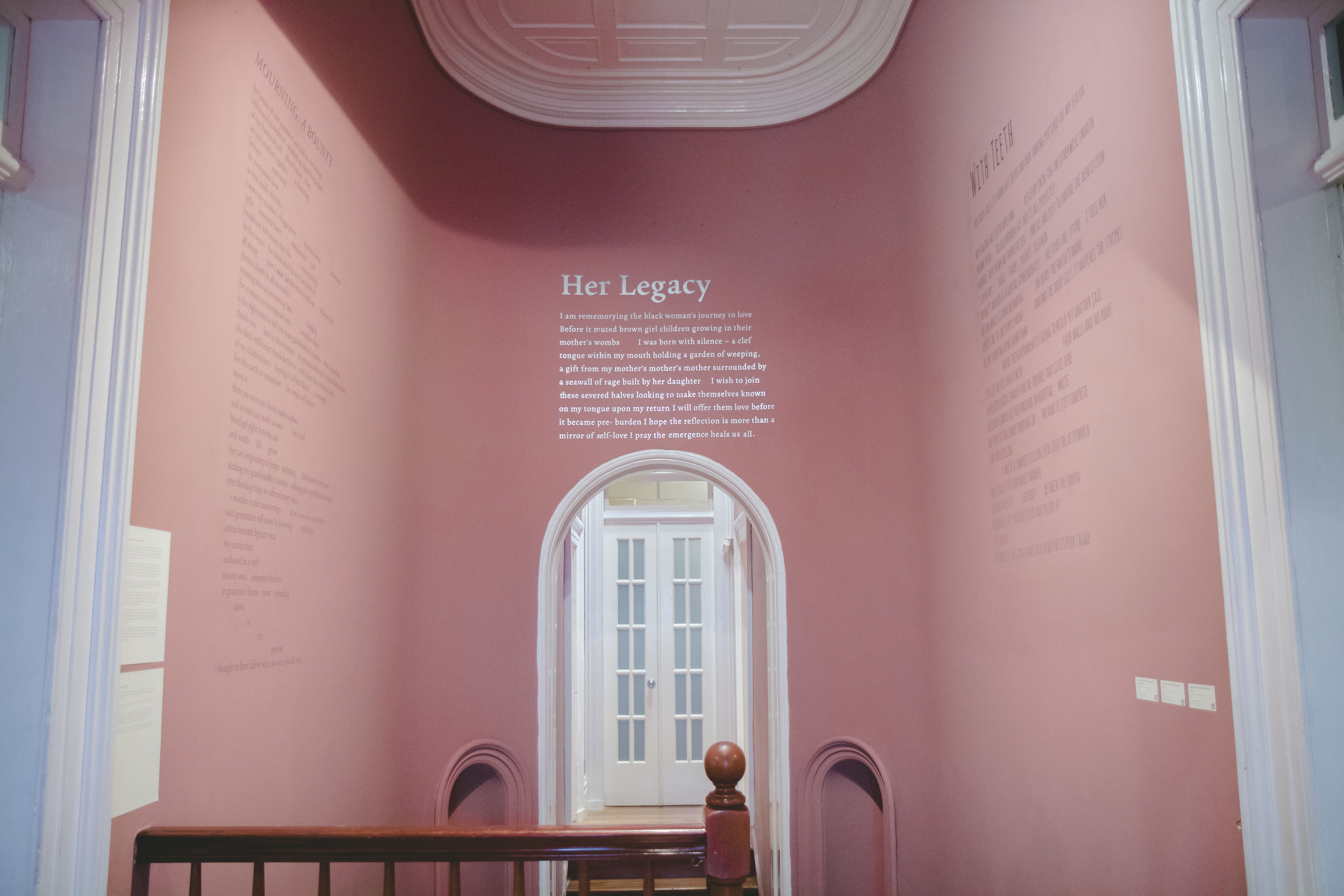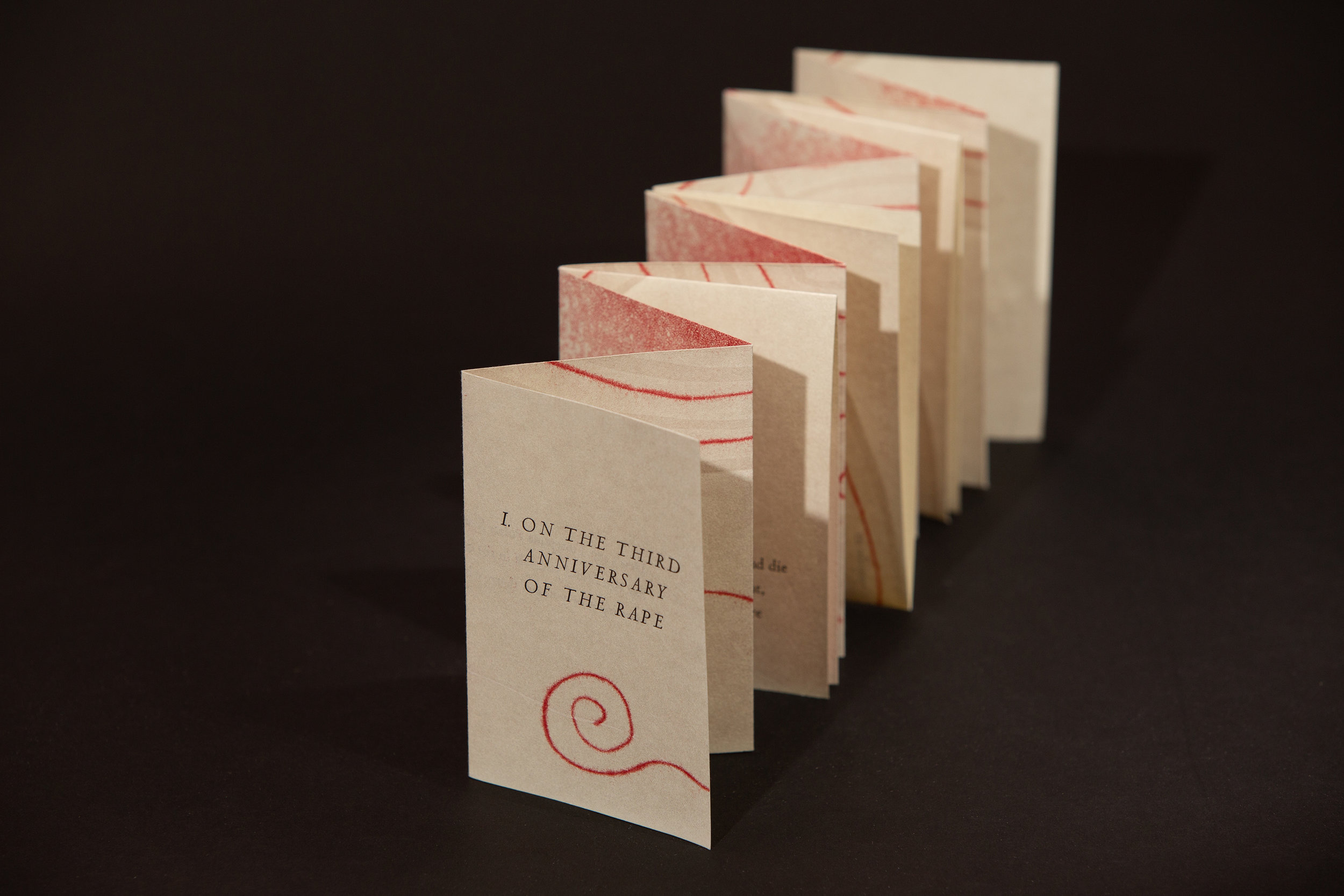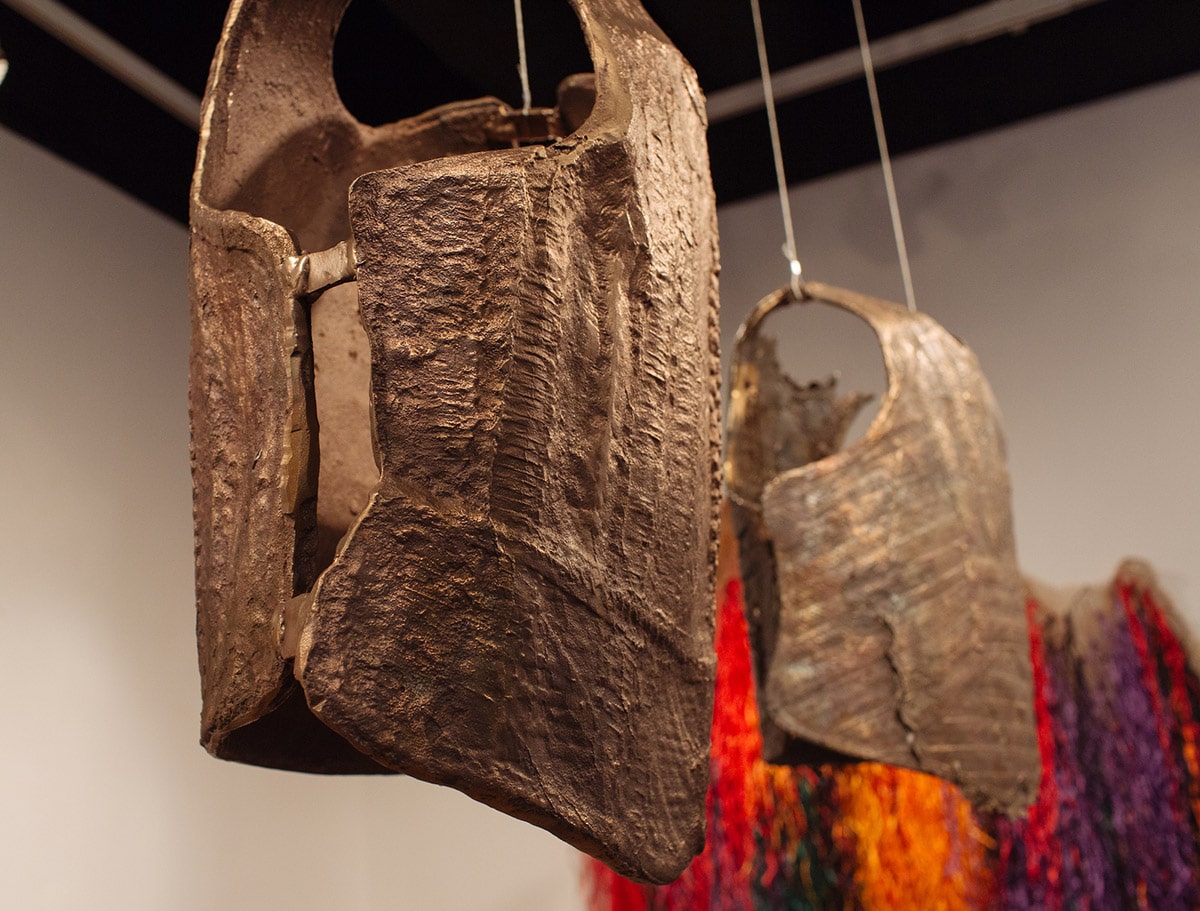By Kevanté A.C. Cash, NAGB Correspondent . Artists Princess Pratt and Christine Wilson curate a night of poetic cultural expression to align with the theme of “The Fruit and The Seed” . Just when you thought the Ninth National Exhibition could not get any saucier—with artworks of daring themes brought forth to challenge the norms of a Bahamian society— poetic duo Saucy Expressions, represented by Princess Pratt and Christine Wilson, curates an evening of “Riddim n Tingum,” featuring rebellious words from Bahamian poets, musicians and writers, for a literary take on NE9’s “The Fruit and The Seed.” One of the two event organisers and performance poet, Princess Pratt, says her interest in wanting to organise an event like this stemmed from the fact that she had never seen a National Exhibition that featured performance poetry before. She wanted it to be an apparatus that bridged the gap between these seemingly separate worlds of artistry. So when the call came out, she and her creative business partner, Christine Wilson, conceived and presented a proposal to utilise the NAGB’s amphitheatre—Fiona’s Theatre—as a space for what would be called “Riddim n Tingum” for the NE9.
All posts by Natalie Willis
The NAGB takes the ITE to Grand Bahama
By Katrina Cartwright. The Inter-Island Travelling Exhibition brings an intense week of activities to the second city. On April 2nd, 2019 the National Art Gallery of The Bahamas’ Inter-Island Travelling Exhibition (ITE) lands in Freeport, Grand Bahama, bringing with it an extensive community outreach agenda inclusive of our public mural programme, free workshops, a curator’s talk, school visits (primary and secondary) and donations of museum literature for art teachers, schools and public libraries. The NAGB was last in Grand Bahama in 2016 with “Max/Amos”, which was showcased at the Charles Hayward Library. Now in its fourth year, with a new exhibition, “Trans: A Migration of Identity”, the NAGB team is taking the travelling exhibition to our second city, where it will be on display at the Rand Nature Centre from April 5th – 26th, 2019.
Considering culture: More than a smile
By Dr Ian Bethell-Bennett, The University of The Bahamas. The art of expression is as much a part of culture as is the art of weaving or straw work, yet we often overlook this. When someone says, “I ga beat you into next week,” the local colour is present, but the violent subtext is usually edited out. In Jamaican novelist, dramatist, critic, philosopher, and essayist Sylvia Wynter’s work “We must learn to sit down together and talk about a little culture” (Jamaica Journal, 1968) we see the commodification of art and culture. Yet, we have apparently progressed to the post-independence point where most pre-independence problems are ignored or cured by the shift. But the exploration of sitting down together demonstrates that we have not moved beyond the problems nor have they disappeared. Violence and violent dispossession remain realities, often ignored.
Talking to the Dead: Tamika Galanis brings Lomax archive materials home
By Natalie Willis
“There are years that ask questions and years that answer.” ― Zora Neale Hurston, Their Eyes Were Watching God
“Homecoming: Talking to the Dead” by Tamika Galanis becomes an answer to a much older question. Galanis’ work, in her careful, tender sifting-through of the Alan Lomax archive (consisting of a host of images and sound from his expedition to The Bahamas in 1935) at the Library of Congress became a response to Lomax’s curious call and questioning nearly 100 years ago. A Library of Congress Fellow, Galanis may be best known to some as “the lady with the shirts” – those Lignum + Tingum tees that serve up Bahamian dialect and lists of local flora and food – but for others she is far, far more – an artist, researcher, documentarian, and a seeker of truth. Coming across materials from this collection while she was undertaking her graduate studies, Galanis saw a letter from Lomax reporting his findings from his time in Nassau back to the Library of Congress (LOC), the start of her time following this thread that would lead her to a surprising connection to Zora Neale Hurston.
The God Self: Lessons on Self-Love from Emerging Artist Cydne Coleby
By Kevanté A.C. Cash, NAGB Correspondent. At first glance, through a narrow lens, one could be offended by the works of emerging artist Cydne Coleby supported in the National Exhibition 9 (NE9) “The Fruit and The Seed”. Crafted with a “slight sense of narcissism”, interwoven with themes of erotic imagery, Coleby addresses the self – the God self, that is. She conducts a session of “soulversations” – moments in time allotted for self to do the work of loving and healing from past traumas and pains through her series “A God Called Self”.
Tender Seedlings: Anina and A.L. Major Reflect on Pain and Love in the Bahamian Diaspora
By Natalie Willis. Art and language, be it in literature, poetry, or song, have perhaps always gone hand in hand. It makes sense of course, because really what we’re getting down to in artwork or in words is communication – often with one being used to describe or illustrate the other. It’s a happy collaboration, and so too was the collaboration between interdisciplinary artist Anina Major and her flesh-and-blood family A.L. Major. The two came together to produce Seedling (2018) for the NE9 “The Fruit and The Seed,” a work incorporating cohesively all manner of material – ceramic, wood, digital clocks, a newly sprouted dilly tree, and the words of poetry and phone calls overland and oversea. The work – part artistic laboratory experiment and part poetic becoming – gives us a way to think on the struggles of identity of the Bahamian emigre.
The Island Repeated: Toni Alexia Roach’s Patterned Approach to Confronting the Past
By Natalie Willis. The land we live in feels like a repetition. We are a repetition of limestone rocks across shallow seas. We are repetitions of faces across families. We repeat the things we learn in school and church and wherever else – many times without critique, and, most disconcertingly, we repeat the same models of power–mainly paternalistic–from hundreds of years ago. This is at the heart of what Toni Alexia Roach gets to in her work for the “NE9: The Fruit and The Seed.” We look at the visual repetitions – palm tree after palm tree, and beach after beach – but we also see that these images are not symbolic of the place we live in, of the Caribbean, they are symbolic of the very idea of the Caribbean picturesque.
A Botanical of Grief: Yasmin Glinton and Charlotte Henay Connect with Ancestors’ Voices and Put Mother Tongue to Poetry
By Natalie Willis. In much of cultural studies, the Caribbean region has been discussed as a place where people feel an uneasy, tense tie to landscape due to our history of people being displaced here. Paradise or purgatory, whether these islands were viewed as restorative or a place of exile – and truthfully, we have had both stories ring true throughout time, it’s all in the branding. Tourist narratives aside, this space is a difficult one to feel truly close to, the landscape feels at once that it is ours and that it is without of our reach given the fact we are all “from elsewhere”, as Stuart Hall (the late Jamaican scholar and father of cultural studies) stated. Poetry in visual art can also be a difficult fit – is it language? Is it visual? Is it both? Problematising our ties to the land and the neat boxes that traditionalists might wish to shove the vast world of poetry into, are the unapologetic works of Yasmin Glinton and Charlotte Henay. “A Botanical of Grief” (2018), displayed in subtle silver script bearing powerful words of great weight, exists between – like so many of us in the Caribbean. The work is between voices: of the authors, of their ancestors, of poet and of artist, but it also exists in a liminal space physically as it spans the high walls of the stairwell of the 1860’s old bones that make up the Villa Doyle. Stairs are between places, and so are we as children of the Caribbean. We are between Africa and Europe, between India and China, we come from Arawaks, Tainos and Caribs with difficult access to those mother tongues – and most importantly, we are an amalgam of any and all combinations of these continents.
The Grave Silence: Sonia Farmer and Shivanee Ramlochan give voice to victims of rape in The Caribbean
By Natalie Willis. The issue of rape, and subsequently its deafening silence, is a shocking social disservice in this country, and it is something we should be using our voices to ask many, many questions about. With a failed gender equality referendum, and marital rape still being legal, it is hardly surprising that the statistics for sexual assault in The Bahamas continue to rise. Read between the lines of the statistics and there’s still not enough room for the 60%+ unreported sexual assaults, let alone the “pick-up” lines (see: street harassment) that feeds into gender-based violence. The statistics for the rape of men are even less likely to show the severity of the situation. The sexual violence against women, children, and men, in addition to the commonplace armed robbery and assault, we are left with a labyrinth of heartache and bloodshed that is difficult to find our way out of.
Under Attack: Averia Wright’s Elevating the Blue Light Special and the Dualities of Bahamian Identity
Averia Wright is well-acquainted with the brand of paradise we manufacture here. Her work, which grapples with issues affecting both The Bahamas and the region at large, is particularly concerned with tourism and its role as a neocolonialist system in the country today.
